Unveiling Zhang Fei Temple: A Hidden Gem for Culture Enthusiasts
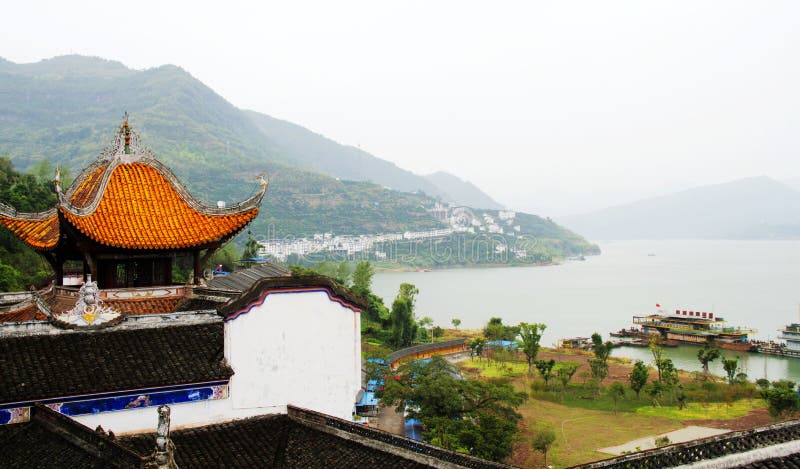
An Essential Guide to Visiting Zhang_Fei_Temple
Nestled against the stunning backdrop of the Yangtze River and the lush landscapes of Chongqing, Zhang Fei Temple stands as a testament to rich Chinese history and culture. This magnificent site, dedicated to the legendary general Zhang Fei of the Shu State from the Three Kingdoms period, invites travelers to step back in time and immerse themselves in the tales of valor and loyalty that have echoed through the ages.
As you approach the temple, you’ll be greeted by a stunning array of architectural styles that reflect the artistry of various dynasties. From intricate wood carvings to elegant calligraphy, each corner of this sacred space tells a story of reverence and remembrance. The temple not only honors Zhang Fei’s heroic deeds but also serves as a cultural hub, celebrating the enduring spirit of the local community.
Whether you’re a history enthusiast, a lover of architecture, or simply seeking a serene escape, Zhang Fei Temple offers an enriching experience that connects the past with the present. Join the numerous pilgrims and tourists who flock to this historic marvel, and uncover the myths, legends, and artistry that make this site a must-visit on your journey through China.
In This Guide
- An Essential Guide to Visiting Zhang_Fei_Temple
- The Rich History and Legends of Zhang_Fei_Temple
- Main Highlights: What You Absolutely Can’t Miss
- Planning Your Visit: A Practical Guide
- Tickets: Prices, Booking, and Tips
- How to Get There: A Complete Transportation Guide
- Local Cuisine and Accommodation Nearby
- Frequently Asked Questions
- Final Thoughts on Your Trip
The Rich History and Legends of Zhang_Fei_Temple
Nestled in the picturesque foothills of Feifeng Mountain along the southern bank of the Yangtze River, Zhang Fei Temple stands as a testament to the rich tapestry of Chinese history and folklore. This sacred site is dedicated to Zhang Fei, a legendary general of the Shu Kingdom during the turbulent Three Kingdoms period (220-280 A.D.). Revered for his extraordinary bravery and unwavering loyalty, Zhang Fei is not only a prominent military figure but also a symbol of righteousness in Chinese culture.
The temple’s origins trace back to the late years of the Shu Dynasty, making it one of the few historic relics in Yunyang County. According to popular legend, Zhang Fei met a tragic end at the hands of his own subordinates, Fan Jiang and Zhang Da, who betrayed him. Following his assassination, they discarded his severed head into the river as they fled to the Kingdom of Wu. However, fate intervened when a local fisherman experienced a vivid dream in which Zhang Fei implored him to recover his head. Guided by this vision, the fisherman retrieved the head and, in a show of respect and devotion, led the community to construct a temple in his honor at the foot of the Phoenix Mountain.
Over the centuries, Zhang Fei Temple has endured numerous trials, including natural disasters and the passage of time. The temple as it stands today is a product of extensive renovations carried out during the Ming and Qing Dynasties, which helped preserve its architectural integrity and cultural significance. In 2002, the temple faced an existential threat from the Three Gorges Dam Project, which necessitated its relocation 32 kilometers upstream. Despite this challenge, the new Zhang Fei Temple has successfully retained the essence of the original structure, incorporating over 4,500 cultural relics, ancient trees, and intricate wood carvings.
The architectural design of the temple is a fascinating blend of northern grandeur and southern delicacy, showcasing traditional Chinese craftsmanship through its exquisite stone carvings, paintings, and calligraphy. Among its many structures, the Main Hall stands out as the heart of the temple, housing a striking statue of Zhang Fei, surrounded by valuable cultural relics that narrate his heroic deeds and the lore of the Three Kingdoms.
Zhang Fei Temple is not merely a monument; it is a vibrant cultural hub where locals and tourists alike gather each year on the lunar date of August 28 to participate in traditional rituals that celebrate Zhang Fei’s legacy. This annual event draws crowds eager to honor the general who has become synonymous with loyalty and valor.
As you wander through the temple grounds, you’ll discover a profound sense of history intertwined with the legends of its namesake. Each carving, each inscription tells a story of a time steeped in conflict and camaraderie, making Zhang Fei Temple an essential destination for those seeking to explore the rich cultural heritage of China. Whether you are an avid historian or a casual traveler, the allure of this sacred site is sure to leave an indelible mark on your journey through the heart of Sichuan.
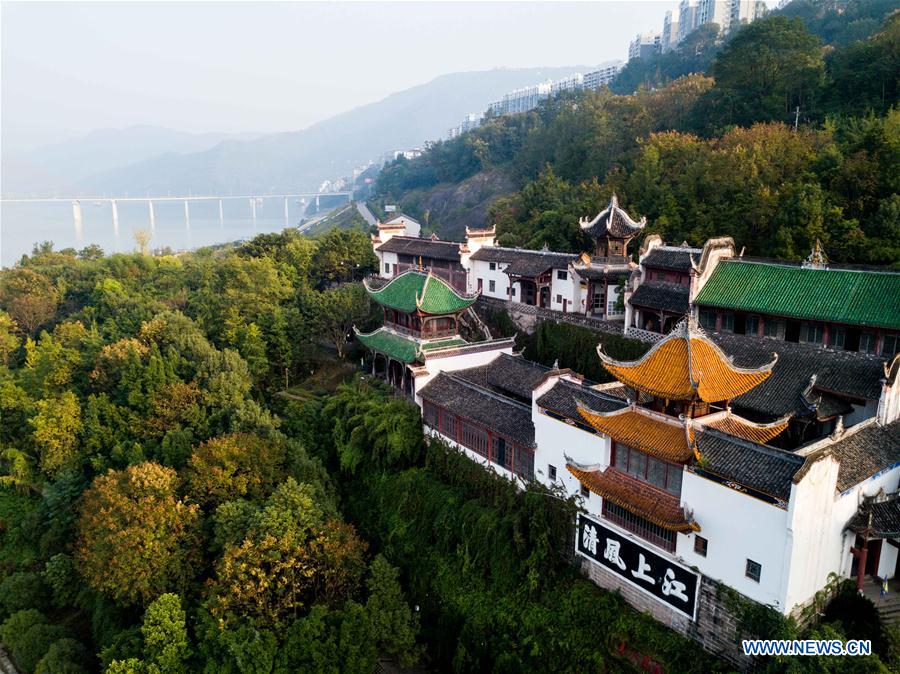
Zhang_Fei_Temple.
Main Highlights: What You Absolutely Can’t Miss
When visiting the Zhang Fei Temple, a revered historical site nestled in the scenic foothills of Feifeng Mountain in Yunyang, Chongqing, there are several highlights that you simply cannot miss. This temple, dedicated to the legendary general Zhang Fei from the Three Kingdoms period, is a treasure trove of culture, history, and architectural beauty.
Architectural Marvel
The Zhang Fei Temple stands as a testament to the architectural ingenuity of ancient China. With a history spanning over 1,700 years, the temple complex features a harmonious blend of northern and southern architectural styles. As you explore the grounds, take note of the Jieyi Building, Deyue Pavilion, and the main hall, which are all beautifully constructed and showcase intricate designs. The layout of the temple is particularly striking, utilizing the natural topography to create a stunning three-dimensional landscape that invites visitors to wander and admire the artistry of various dynasties.
Calligraphy and Cultural Relics
Art enthusiasts will be thrilled to discover the temple’s extensive collection of calligraphy and cultural relics. Over 800 pieces of calligraphy from notable historical figures adorn the walls, including inscriptions and couplets that reflect the rich literary heritage of the region. The Calligraphy and Painting Corridor and the Zhufeng Pavilion are must-visit spots for those keen to experience the depth of Chinese artistic expression, where traditional styles and modern interpretations coexist.
The Legend of Zhang Fei
The legend surrounding Zhang Fei adds an intriguing layer to your visit. According to folklore, after his assassination, his head was thrown into the Yangtze River, where a fisherman dreamt of him and retrieved it. This poignant story not only highlights Zhang Fei’s heroic spirit but also connects visitors to the historical significance of this site. The temple serves as a memorial for Zhang Fei, where annual rituals attract crowds, particularly during the lunar month of August.
A Glimpse into the Past
As you stroll through the temple, immerse yourself in the rich history that permeates its walls. The temple complex includes numerous sculptures that depict Zhang Fei’s legendary exploits and the military culture of the Shu state. This unique portrayal of both civil and military achievements provides an insightful look into the values and traditions of ancient China.
Natural Beauty and Tranquility
Beyond its historical and architectural significance, the temple is enveloped by the stunning natural landscape of the Yangtze River. The serene surroundings, complete with lush greenery and flowing water, offer a perfect backdrop for reflection and relaxation. Take a moment to walk along the stone bridge, admire the waterfalls, or simply enjoy the peaceful ambiance that this sacred site exudes.
Conclusion
Zhang Fei Temple is not just a historical site; it is a vibrant cultural hub that celebrates the legacy of one of China’s most famed generals. Whether you are an architecture aficionado, a history buff, or simply seeking a tranquil escape, this temple captivates with its beauty, stories, and artistic treasures. Make sure to add this remarkable destination to your travel itinerary when exploring the enchanting landscapes of Chongqing.
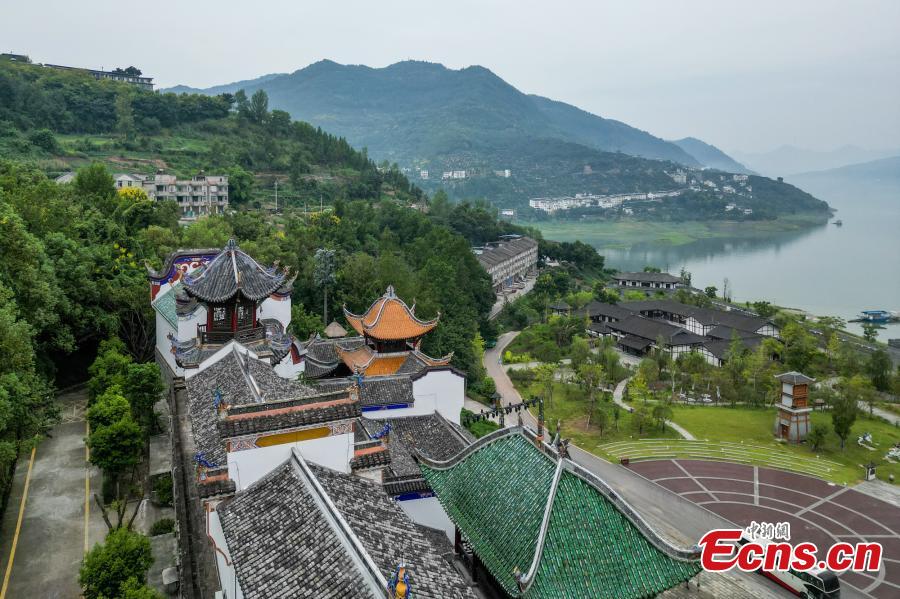
Zhang_Fei_Temple.
Planning Your Visit: A Practical Guide
If you’re planning a visit to Zhang Fei Temple in Yunyang County, Chongqing, you’re in for an enriching experience steeped in history and culture. This guide offers practical information to help you make the most of your visit to this remarkable site.
Getting There
Zhang Fei Temple is situated approximately 382 kilometers from Chongqing City, along the southern bank of the Yangtze River. Here are some transportation options to reach the temple:
- By Bus: From Chongqing, take a direct bus to Yunyang Lotus Station, which takes about four hours. Buses depart from various stations, but the Chaotianmen traffic square bus station is a reliable option.
- By Train: You can take a train to Chongqing North Station and then transfer to the long-distance bus station for a direct bus to Yunyang.
- By Car: If you prefer driving, renting a car or hiring a taxi for a scenic ride along the Yangtze River may enhance your travel experience.
Best Time to Visit
The best seasons to visit Zhang Fei Temple are spring and winter. Summers can be hot and humid, with temperatures soaring above 38°C, while autumn often brings continuous rain. Expect average temperatures around 18°C, making spring and winter the most pleasant times to explore the temple and surrounding areas.
Opening Hours
Zhang Fei Temple is open daily from 8:30 AM to 5:30 PM. To maximize your visit, consider arriving early to enjoy the peaceful ambiance and avoid crowds.
What to Expect
As you approach the temple, take in the stunning architecture that harmonizes with the natural landscape of Feifeng Mountain. The complex features several main buildings, including the Main Hall, Jieyi Building, and Deyue Pavilion, showcasing styles from various dynasties.
Upon entering, you’ll be greeted by a statue of Zhang Fei, alongside a myriad of cultural relics, calligraphy, and wood carvings. Don’t miss the Calligraphy and Painting Corridor, which is home to over 800 inscriptions and artistic works.
Historical Significance
Zhang Fei Temple is not just a stunning architectural feat; it’s rich in historical lore. According to legend, Zhang Fei, a valiant general of the Shu Kingdom during the Three Kingdoms Period, was beheaded by his followers. His head was tossed into the river, but a local fisherman dreamt of Zhang Fei, who instructed him to retrieve it. This act led to the establishment of the temple in his honor, making it a site of cultural reverence.
Visitor Tips
-
Dress Comfortably: Be sure to wear comfortable shoes and clothing, as you’ll likely do some walking and climbing as you explore the temple grounds.
-
Photography: Bring your camera! The temple’s architecture and natural surroundings offer ample opportunities for stunning photographs.
-
Explore the Area: While in Yunyang, consider exploring other nearby attractions, such as the magnificent Three Gorges Dam and the beautiful Yangtze River.
-
Respect Local Customs: If you visit during the Lunar August 28 festival, be respectful of the rituals and activities that may take place, as this is a significant time for local worshippers.
-
Stay Hydrated: Bring water, especially during warmer months, as you may spend several hours walking around the site.
Local Accommodations
For those wishing to stay overnight, Yunyang County offers a variety of accommodations, from budget hotels to more upscale options. Booking in advance is recommended, especially during peak travel seasons.
Conclusion
A visit to Zhang Fei Temple is more than just a trip to a historical site; it’s a journey into the heart of Chinese culture and history. With its stunning architecture, rich legends, and serene surroundings, this temple promises an unforgettable experience for every traveler. Enjoy your visit!
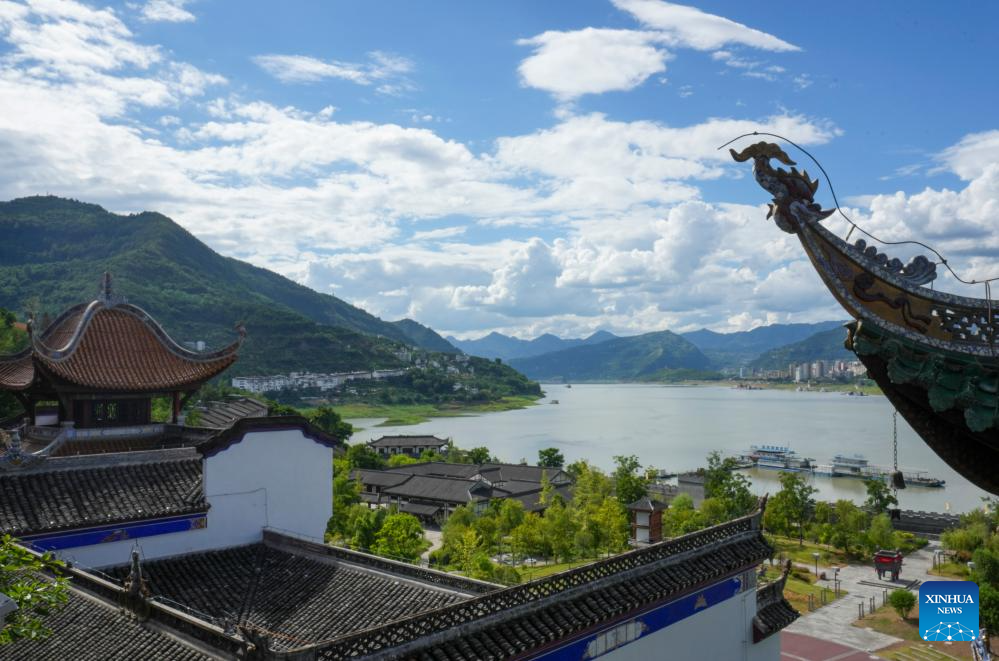
Zhang_Fei_Temple.
Tickets: Prices, Booking, and Tips
When planning your visit to the Zhang Fei Temple, it’s important to keep in mind the ticket prices, booking options, and some handy tips to enhance your experience.
Ticket Information
Admission to the Zhang Fei Temple is quite reasonable, with tickets typically priced at around 30 RMB (approximately $4.50 USD). This fee grants you access to the temple complex, where you can explore its rich history and stunning architecture.
Booking Your Visit
While tickets can often be purchased on-site, it’s advisable to check for any potential online booking options, especially during peak travel seasons. Some travel agencies may offer packages that include guided tours of the temple along with other attractions in the Chongqing area.
Tips for a Memorable Visit
-
Best Time to Visit: The ideal seasons to visit Zhang Fei Temple are spring (March to May) and autumn (September to November) when the weather is mild and the surrounding scenery is most beautiful. Summers can be hot, and winters might be chilly, so plan accordingly.
-
Getting There: The temple is located about 23 kilometers from downtown Chongqing. You can reach it by taking a bus or a train to Yunyang County. From there, local transport options like motorcycles or taxis can take you directly to the temple.
-
Explore the Surroundings: Take your time to explore the area around the temple. The natural beauty of Feifeng Mountain and the Yangtze River adds to the serene atmosphere, making it a perfect spot for photography and quiet reflection.
-
Cultural Experience: Engage with the local customs and traditions. If you’re visiting during the lunar calendar’s August 28, you might witness traditional rituals that honor Zhang Fei, providing a deeper insight into the cultural significance of the site.
-
Plan for a Full Day: Given the temple’s historical importance and the surrounding attractions, consider dedicating a full day for your visit. This allows for ample time to appreciate the architecture, explore the museum exhibits, and enjoy a leisurely walk around the picturesque landscape.
With these tips in mind, you’re all set for a rewarding visit to the Zhang Fei Temple, a remarkable testament to China’s rich history and culture. Enjoy your journey through time!
How to Get There: A Complete Transportation Guide
Reaching Zhang Fei Temple, a historic gem nestled along the Yangtze River in Yunyang County, Chongqing, is an adventure in itself. Here’s a comprehensive guide to help you navigate your way to this remarkable site dedicated to the legendary general of the Shu State.
Getting to Chongqing
Before heading to Zhang Fei Temple, you’ll first need to arrive in Chongqing, one of China’s major cities. Here are the main transportation options:
-
By Air: Chongqing Jiangbei International Airport (CKG) serves numerous domestic and international flights. Once you land, you can take a taxi or airport shuttle to downtown Chongqing, which is about a 30-minute drive (roughly 23 kilometers) from the airport.
-
By Train: If you’re traveling from other parts of China, take a high-speed train to Chongqing North Railway Station (Longtousi Station). The station is well-connected, making it easy to reach from various cities.
From Chongqing to Zhang Fei Temple
Once in Chongqing, your next step is to travel to Zhang Fei Temple. Here are your options:
1. Direct Bus
- Departure Point: Head to the Chongqing Long-Distance Bus Station, located near the Chongqing North Station.
- Bus to Yunyang: Board a bus bound for Yunyang. The journey typically takes about 4 hours, and buses run regularly throughout the day.
- Final Stop: The bus will drop you at Yunyang Lotus Station. From there, you can take a local bus or taxi to the temple.
2. Train and Bus Combination
- Train to Chongqing: Take a train to Chongqing North Station.
- Bus Transfer: After arriving, walk to the Chongqing Long-Distance Bus Station across the street to catch a bus to Yunyang.
- Travel Time: The total journey may take around 5 to 6 hours, including the bus transfer.
3. Cruise and Bus
- Cruise Option: If you prefer a scenic route, consider taking a cruise along the Yangtze River to Yunyang. This can be a picturesque way to enjoy the landscape.
- Getting to the Temple: Once you arrive at the Chaotianmen Dock or Yunyang Port, you can take a local bus or hire a motorcycle taxi to reach Zhang Fei Temple, which is a short distance away.
Local Transport in Yunyang
Upon reaching Yunyang, getting to Zhang Fei Temple is straightforward:
- Taxi or Motorcycle Taxi: Taxis are readily available. Alternatively, motorcycle taxis offer a quick and exhilarating way to navigate the local streets.
- Walking: If you’re feeling adventurous and the weather is pleasant, walking to the temple can be a scenic option, allowing you to soak in the local atmosphere.
Travel Tips
- Best Time to Visit: The ideal times to visit Zhang Fei Temple are in spring and winter when the weather is milder. Summer can be hot and humid, while autumn may bring frequent rain.
- Plan Ahead: Check bus and train schedules in advance, especially during peak travel seasons or holidays, to avoid any delays.
With this guide, you’re well-equipped to embark on your journey to Zhang Fei Temple. Enjoy the rich history, beautiful architecture, and cultural significance that this remarkable site has to offer!
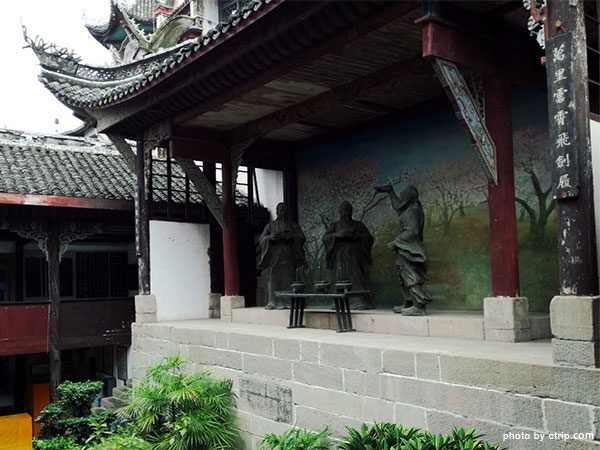
Zhang_Fei_Temple.
Local Cuisine and Accommodation Nearby
Visiting Zhang Fei Temple in Yunyang County is not only an opportunity to dive into the rich history and culture surrounding this revered site, but also a chance to indulge in the local cuisine and enjoy comfortable accommodations nearby. Here, you can experience the flavors of the region and find a place to rest after a day of exploration.
Culinary Delights
1. Yunyang Noodle House (云阳面馆)
A local favorite, this humble noodle house serves up traditional Yunyang noodles, known for their rich, spicy broth and handmade noodles. The dishes here are often accompanied by fresh vegetables and tender meats, making it a hearty meal after visiting the temple. Don’t miss out on trying their signature Spicy Beef Noodles!
2. Ancient Street Snacks (古街小吃)
As you stroll through the charming streets near the temple, you’ll encounter various street food stalls offering an array of snacks. Try the Grilled Fish Skewers seasoned with local spices, or indulge in Sichuan-style Dumplings that pack a flavorful punch. These quick bites are perfect for a light meal or snack while enjoying the scenery.
3. Feifeng Restaurant (飞凤餐厅)
For a more formal dining experience, head to Feifeng Restaurant, which specializes in traditional Sichuan cuisine. Here, you can savor dishes like Mapo Tofu and Kung Pao Chicken, all prepared with fresh, locally sourced ingredients. The restaurant offers a comfortable ambiance and is ideal for families or groups.
Comfortable Stays
1. Zhang Fei Hotel (张飞酒店)
Located just a short distance from the temple, Zhang Fei Hotel offers modern amenities with a touch of local charm. The comfortable rooms provide a relaxing atmosphere, and the hotel staff are known for their warm hospitality. Enjoy a quiet night’s rest before heading back to explore more of the area.
2. Yangtze River Inn (长江河畔酒店)
For those seeking a picturesque view, Yangtze River Inn overlooks the majestic Yangtze River. This hotel features well-appointed rooms and a restaurant that serves both local and international dishes. It’s an excellent choice for travelers who want to unwind while enjoying the serene river landscape.
3. Feifeng Mountain Guesthouse (飞凤山庄)
If you’re looking for a more rustic experience, consider staying at Feifeng Mountain Guesthouse. Nestled near the foothills, this guesthouse offers a cozy atmosphere and the opportunity to connect with nature. Guests can enjoy home-cooked meals made from fresh, local ingredients, making it a delightful retreat after a day of sightseeing.
Final Thoughts
Exploring the Zhang Fei Temple not only enriches your understanding of Chinese history and culture but also opens the door to delightful local culinary experiences and comfortable accommodations. Whether you’re enjoying a plate of spicy noodles or resting in a hotel with a river view, the area surrounding Zhang Fei Temple promises a memorable journey for every traveler.
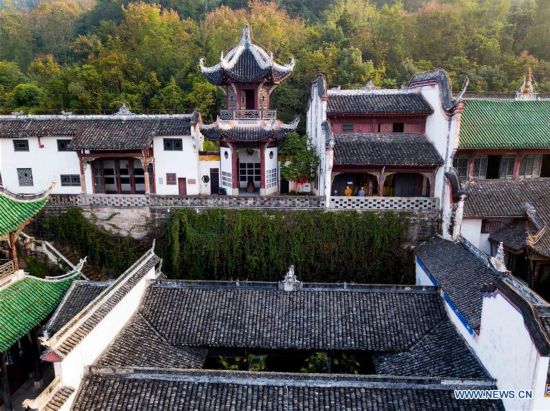
Zhang_Fei_Temple.
Frequently Asked Questions
-
What is the best time to visit Zhang Fei Temple?
The ideal time to visit Zhang Fei Temple is during spring (March to May) and winter (November to February). The average temperatures are more pleasant at around 18°C (64°F) during these seasons, while summer can be quite hot, reaching up to 38°C (100°F). -
How do I get to Zhang Fei Temple from Chongqing?
Zhang Fei Temple is approximately 23 kilometers from downtown Chongqing. You can take a direct bus from Chongqing North Station to Yunyang, which takes around four hours. Alternatively, you can take a train to Chongqing North Station and then take a bus to Yunyang County, followed by a short motorcycle ride or walk to the temple. -
Are there any entrance fees for Zhang Fei Temple?
There are typically no entrance fees to visit Zhang Fei Temple, but it’s best to check for any changes or special events that may require a ticket. -
What can I expect to see inside Zhang Fei Temple?
Inside the temple, you will find a statue of Zhang Fei, along with hundreds of valuable cultural relics including stone carvings, wooden carvings, and calligraphy. The architecture reflects a blend of styles from various dynasties, creating a visually stunning experience. -
Is there any accommodation available near Zhang Fei Temple?
Yes, there are several hotels and guesthouses in Yunyang County that cater to travelers. It’s recommended to book in advance, especially during peak tourist seasons. -
Can I take photographs inside the temple?
Generally, photography is allowed within the temple complex; however, be respectful of any signs or instructions regarding flash photography or specific areas where photography may be restricted. -
Are there any guided tours available for Zhang Fei Temple?
Yes, guided tours are often available and can enhance your experience by providing insights into the history and significance of the temple. It’s advisable to arrange a tour in advance or check with local travel agencies. -
What nearby attractions should I consider visiting?
While in the area, you might also want to explore other attractions in Yunyang County, such as the scenic Yangtze River views, local markets, or take a cruise along the river. Additionally, the Three Gorges Dam is a major attraction not far from Zhang Fei Temple.
Final Thoughts on Your Trip
As you conclude your journey to the Zhang Fei Temple, take a moment to reflect on the rich tapestry of history, culture, and artistry that envelops this remarkable site. Standing in the shadow of Feifeng Mountain, you’re not just visiting a temple; you’re stepping into a storied past that resonates with tales of bravery, loyalty, and sacrifice from the legendary era of the Three Kingdoms.
The exquisite architecture, adorned with intricate carvings and captivating calligraphy, invites you to appreciate not only the craftsmanship of bygone dynasties but also the enduring spirit of the local community that honors its hero, Zhang Fei. Each corner of the temple whispers stories of valor and reverence, making it a profound experience for anyone eager to understand the essence of Shu culture.
As you leave, carry with you the spirit of Zhang Fei—his courage and loyalty—and let it inspire your own adventures. Whether you’re exploring the bustling streets of Chongqing or the serene banks of the Yangtze River, remember that every journey is a chance to uncover history and forge connections with the past. Safe travels, and may your explorations continue to be enriched by the remarkable stories of the places you visit!